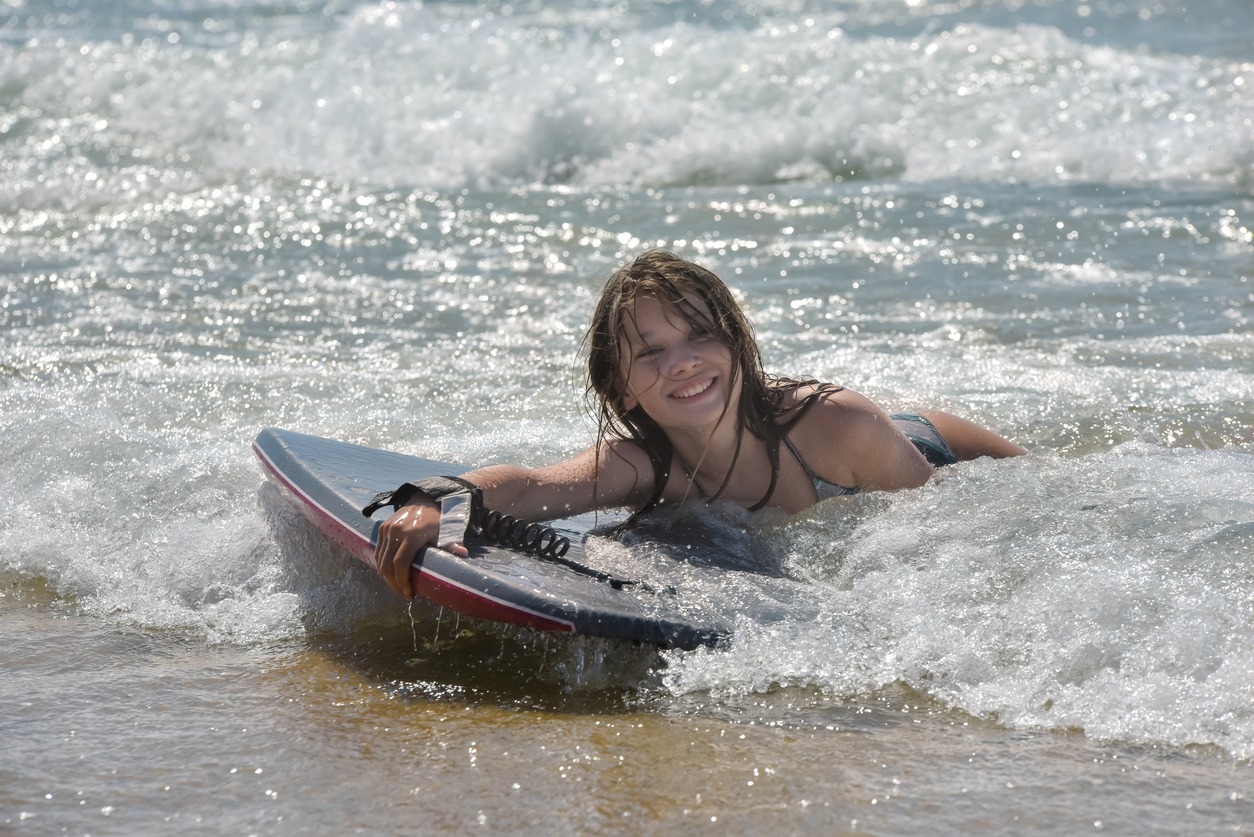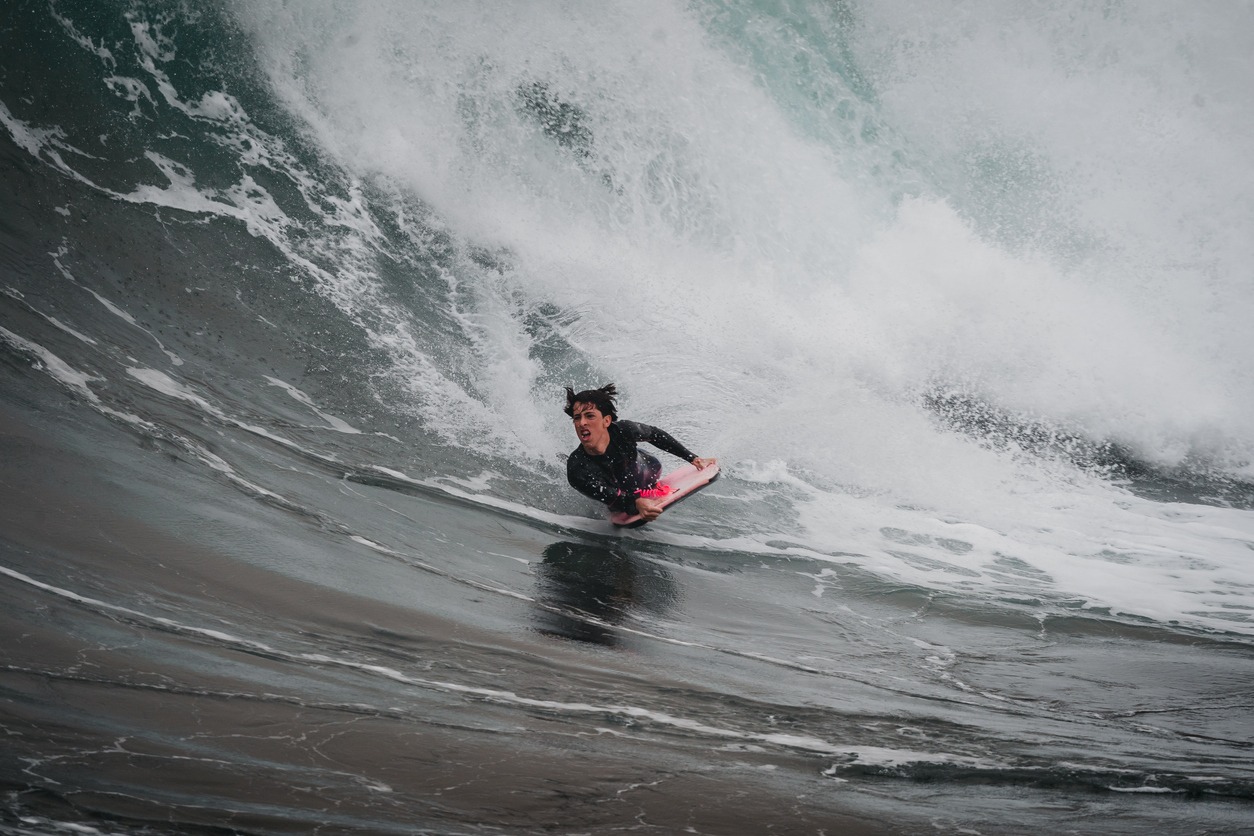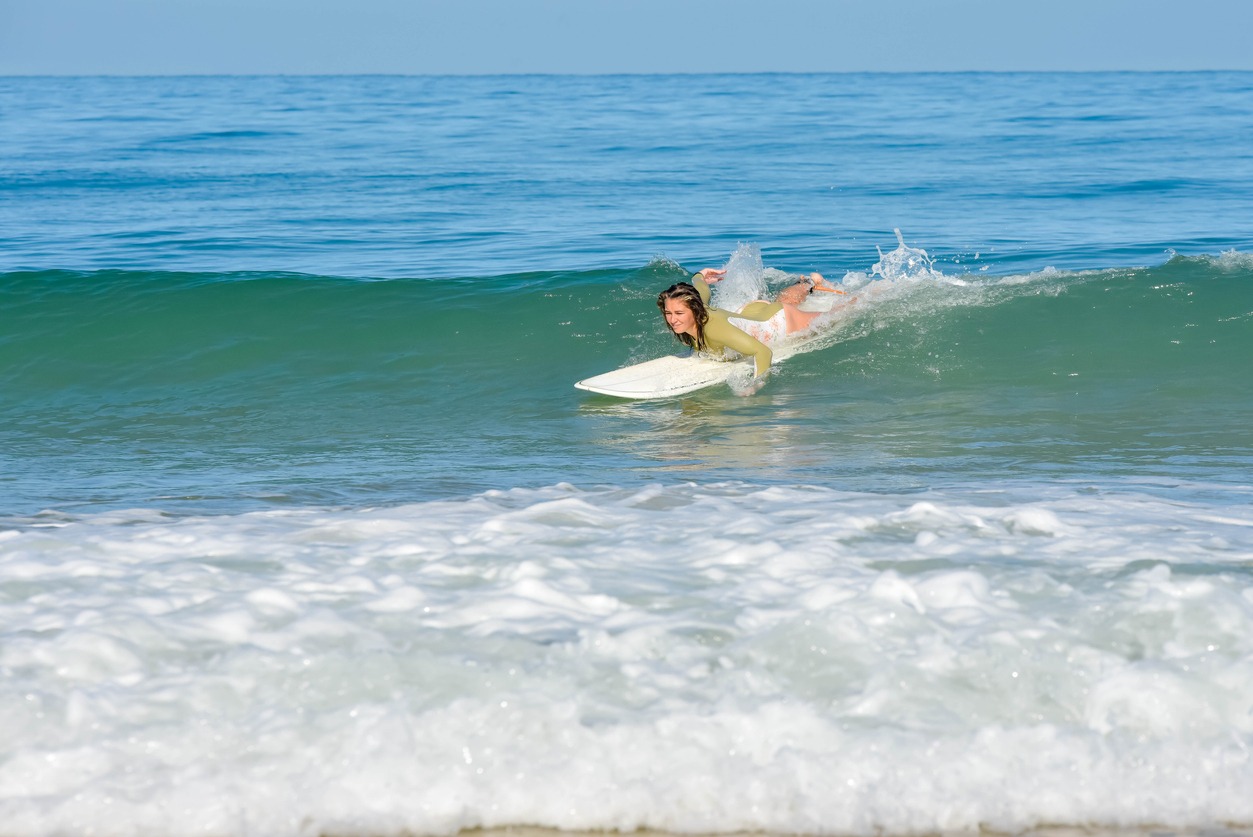Beginner Bodyboarding Tips: How to Catch Your First Waves
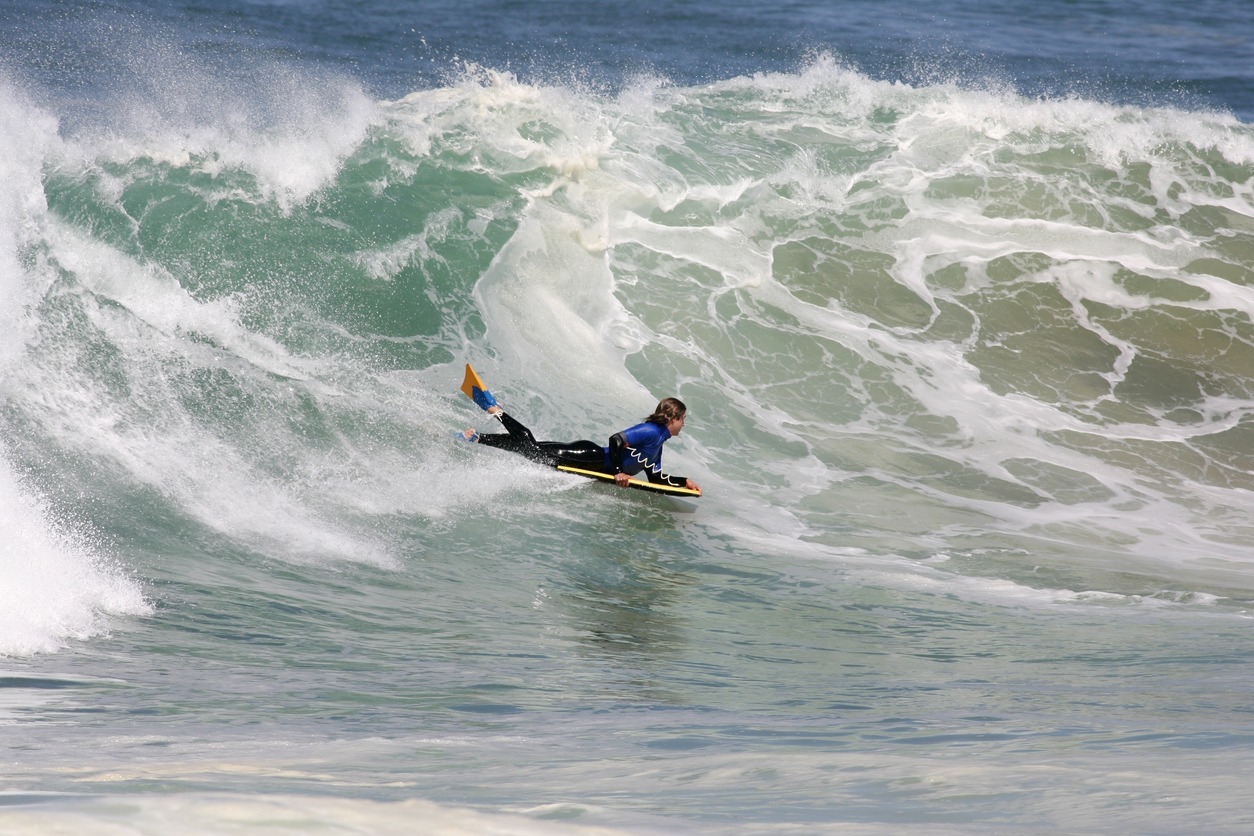
To catch your first waves bodyboarding, start with the right board for your height and skill level. Choose a sandy beach with gentle, rolling waves and position yourself in waist-deep water. Turn your board towards shore, back to the horizon, and wait for the right wave. As it approaches, plunge smoothly onto the board and paddle with strong, alternating strokes. Use your body weight to steer and stay relaxed, focusing on where you want to go. Remember to follow safety guidelines and surf etiquette. With practice and these tips, you'll soon be riding waves like a pro and ready to take on more challenging conditions.
Choosing the Right Bodyboard
Selecting the right bodyboard is essential for novices to guarantee a fun and safe experience in the waves. When choosing your first board, consider your height and skill level. As a beginner, you'll want a bodyboard that reaches your navel when standing upright. This length provides optimal stability and control as you learn to navigate the waves. Longer boards provide more stability and buoyancy in small waves, which can be beneficial for beginners. Material is another pivotal factor. Soft foam boards are ideal for beginners, offering buoyancy and forgiveness as you catch your first waves. These boards are more forgiving when you make mistakes, allowing you to focus on improving your technique. As you progress, you may want to move to high-density foam or polyethylene boards, which offer increased speed and maneuverability for tackling more challenging waves.
Positioning and Wave Selection
Now that you've got the right board, it's time to focus on positioning and wave selection. Start by finding a sandy beach break with gentle, rolling waves that are perfect for beginners. Look for a suitable wave that's not too large or powerful - you want to build confidence, not get overwhelmed. Bodyboarding is a water activity suitable for all ages to learn, so this is a great opportunity to try a new water sport.
Once you've identified the right spot, wade into waist-deep water and position your bodyboard perpendicular to the incoming waves, with the tail facing the shore. This stance will help you catch the wave more easily. As you wait for the perfect wave, keep an eye on the horizon and watch for small, unbroken waves approaching.
Timing is essential when catching a wave. Identify the breaking point and position yourself accordingly. You'll want to be slightly ahead of where the wave will break to maximize your ride. As the wave approaches, start paddling and be ready to catch it.
Mastering the Basic Techniques
With the right positioning and wave selection under your belt, it's time to focus on perfecting the basic techniques of bodyboarding. As you prepare to catch your first wave, remember that a smooth, controlled approach works best.
Start by lying on your board with your chest at the nose and your arms hanging over the sides. When a suitable wave approaches, begin paddling with both arms, using strong, alternating strokes. As the wave lifts your board, kick your legs to gain momentum and slide down the face of the wave.
To maintain control, keep your elbows on the rails of the board and your hands near the nose. Use your body weight to steer by leaning slightly in the direction you want to go. For turning, apply pressure with your inside arm and hip while lifting the opposite side of the board.
Practice the drop-knee technique for more advanced riding. Place one knee on the board while keeping the other foot forward, allowing for sharper turns and better control in bigger waves. Remember to stay relaxed and keep your eyes on where you want to go, not on the nose of your board.
Riding Your First Wave
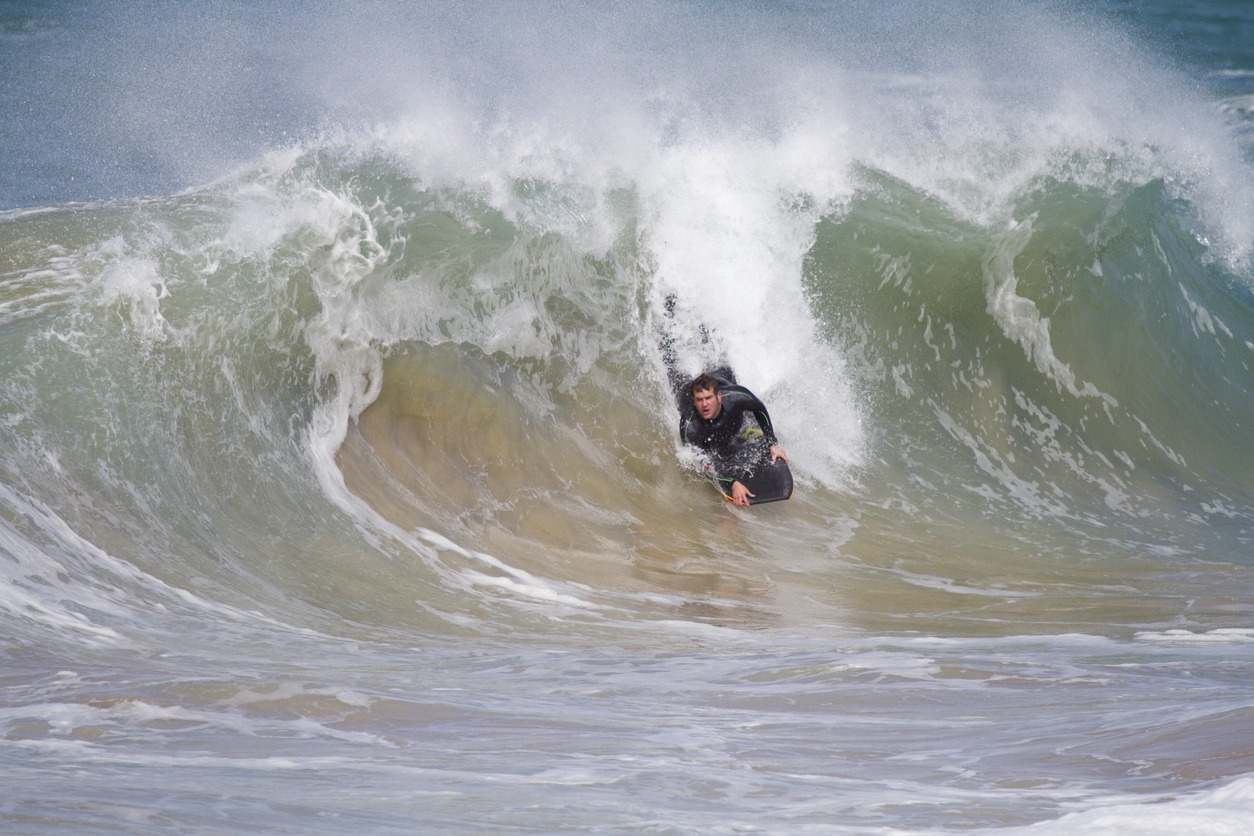
You've practiced the basics, and now it's time for the real deal: riding your first wave. Start by walking out to waist-deep water, grab your bodyboard, and turn it towards the shore. Position yourself with your back to the horizon, keeping an eye out for suitable waves approaching.
As you wait for the right moment, rest your board on the water's surface and prepare to catch a wave. When you spot a promising swell, bend your knees and get ready to plunge onto your board. Timing is vital – aim to plunge smoothly as the wave hits the tail of your bodyboard.
For a successful ride, strive for a controlled, swan-like plunge towards the shore. This technique will help you catch the wave effectively and maintain stability as you glide through the water. Remember, the key to a life-changing experience is perfecting the right timing and technique.
Don't be discouraged if you don't catch powerful waves immediately. Start with smaller, gentler swells and gradually work your way up to more challenging local surf conditions. With practice and persistence, you'll soon be confidently riding waves and enjoying the thrill of bodyboarding.
Safety and Etiquette Tips
As you progress in your bodyboarding expedition, it's important to focus on safety and etiquette. Before you ride the waves, familiarize yourself with rip currents and learn how to identify and manage them safely. Invest in quality gear, including swim fins, a leash, and a rash guard for added comfort and protection.
When you're in the water, follow local surf etiquette. Yield to riders on the wave and respect designated surf zones. Practice responsible beach and ocean behavior to cultivate a positive experience for all beachgoers. Remember, safety should always be your top priority.
To make the most of your bodyboarding experience while staying safe, follow these key tips:
- Always check the surf conditions and weather forecast before entering the water
- Never bodyboard alone; always have a buddy or let someone know your plans
- Stay within your skill level and gradually progress to more challenging waves
- Be aware of your surroundings, including other surfers, swimmers, and potential hazards

